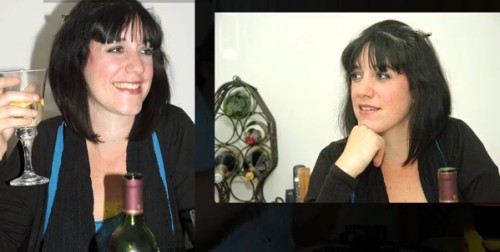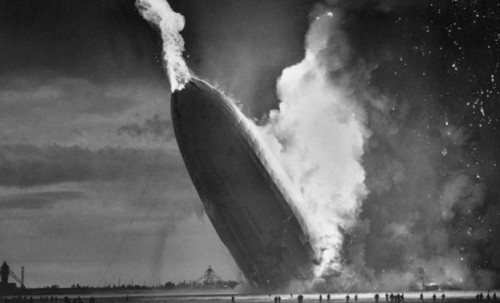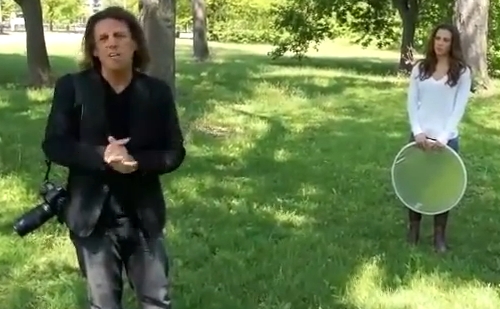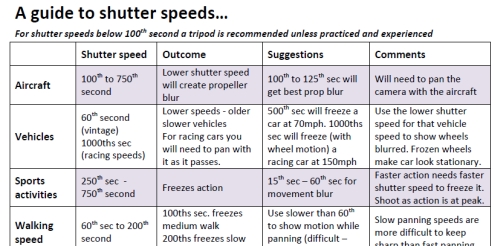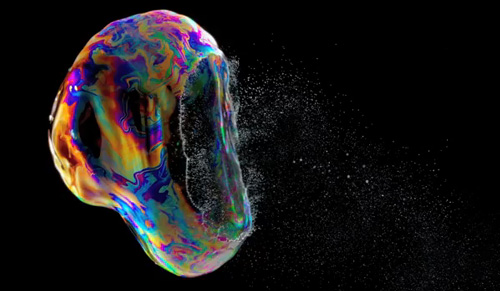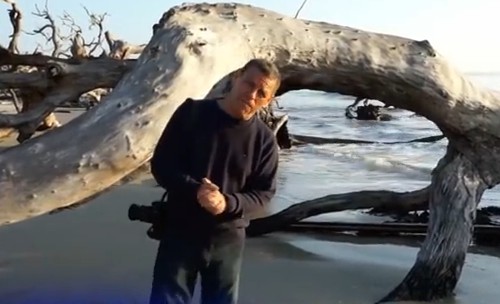
• Break the pattern – interest the eye•
When you break the pattern your texture, pattern or background takes on a new perspective. The eye is drawn in to explore the changed symmetry.
(Image of Brian Peterson taken from the video).
The eye loves pattern and texture…
Detail in the world around us can be attractive to the eye. But often we miss this detail if the eye is not drawn to it. Break the pattern and our eye is drawn in.
Break the pattern – break the monotony
Pattern attracts the eye because it is uniform and predictable. However, pattern is also spoilt for the same reason. When we see a pattern we are not threatened by it. We quickly know it. We feel comfortable with it. In fact the eye quickly becomes bored.
There is a good reason for this quick loss of interest. As we move around in our environment pattern allows us spot safety or danger; predator or prey. When we see something break the pattern we need to explore it. Is there danger here? Is there prey here? We find the things we seek when we see a break in the expected pattern.
Seek the difference
Our eye-brain system is really good at recognising pattern. But it is the ‘slightly different’ we really want to know about. We quickly lose our focus on the pattern – unless we see it is no longer uniform at some point. An edge that is different; or colour, or form, alerts the eye. Then, our eye-brain system spends time comparing and contrasting. We explore.
If you think about what really fascinates the human spirit it is all about things that break the pattern. When something is not as we expect it all sorts of questions are raised. We could almost say that understanding “pattern and inconsistency” is behind the scientific revolution. We look to understand the world by finding pattern. When something breaks the pattern it is a source of endless curiosity.
So it is in photography…
Images provide this same interest. By creating a pattern we make it easy to know the picture. When we break the pattern we introduce the same endless quest to explore. You have won the viewers eye when you make them explore your image. Ultimately, you interest them when they want to know more, or to know why.
Pattern Texture: You Keep Shooting with Bryan Peterson
In this short video Brian looks at a simple, predictable texture. He very simply shows how to break the pattern to attract the eye. Another tip after the video…
Adorama ![]()
More than one dimension
If you break the pattern you interest the eye. However, composition has more than one dimension. If we want to interest the eye a break the pattern – yes. But, we can do it in a boring way and lose the eye quickly. If the flower in Brian’s shot was placed dead centre the effect would be lost. When central the picture suddenly becomes about the flower. Actually we want the picture to be about how we broke the pattern. So, if you re-run the video you will see that not one of the photos had the break at dead centre. Each one was on, or near, a “third”. Yes folks… the good old Rule of Thirds.
If you off-set the break to a “third” you break the pattern again. You raise another question in the viewers mind. Why there? Why not the centre? Why not where it was expected? At the same time you give the pattern in the picture a strength that would not be there if the flower were central.
Vision
Seeing, in the photographic sense, is all about understanding vision. Knowing pattern and why we look at it is a large part of understanding what attracts the eye. At the same time, understanding why we seek patterns, is also why we are fascinated by any break in the same pattern.
Comments, additions, amendments or ideas on this article? Contact Us
or why not leave a comment at the bottom of the page…
Like this article? Don’t miss the next — sign up for tips by email.
Photokonnexion Photographic Glossary – Definitions and articles.
Composition
Rule of Thirds
Geometry and pattern in photography
Patterns… break the pattern

Damon Guy (Netkonnexion)
See also: Editors ‘Bio’
By Damon Guy :: Profile on Google+.

